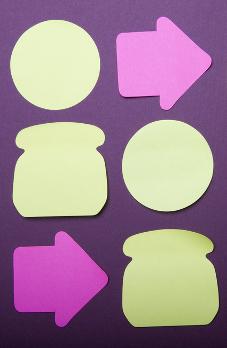Learning history, Timeline method
Use for
Advanced learning; reflexive monitoring in action.
Principles
Different stakeholders will evaluate a project or programme differently. Sharing and discussing these evaluations contributes to advanced learning and the development of a common perspective of innovation.
What do you do?
With the Timeline method you make a relatively quick evaluation of a project or programme. You first ask everyone involved to mention significant events in the history of the project or programme. These are events that have advanced the process or that the stakeholders regarded as an obstacle. You then arrange these personal observations in a timeline and discuss them with the participants. This produces a history of the development of the project, together with personal learning experiences.
A Learning History is a deeper analysis of the development of an experiment or programme and important choices that were made during it. To start with, you construct the history of a project or programme from documents and in-depth interviews/reflection sessions with the participants (for a description of how you could organise a reflection session, see also the Eye-opener workshop method). Experiences, and the context in which they occurred, are included in order to allow insights gained in a specific context to be applied to a different setting. The information is collected in a draft Learning History document that is discussed with the participants. The final document of a Learning History has two columns: the right-hand column describes the events from the perspective of the participants (with attention to the timing of important choices); the left-hand column contains critical questions and comments from the reflections.
A special form of learning history is the Audio-visual learning history In an audio-visual learning history the participants in a project describe the highlights, low points and key moments in their own words, along with their emotions and facial expressions. These snapshot descriptions should be as close to the context and experience of the project or programme as possible so that outsiders can, as it were, relive the moments.
There are three stages in the development of an audio-visual learning history. In the first phase, the narratives and experiences of the participants in the project are filmed. In the second phase, these images are edited into brief fragments. In the final phase, the film is released and/or shown to others in workshops. In a dynamic digital environment the fragments are linked thematically to each other and there is an opportunity to present reflections and new learning experiences.
Prerequisites
- Participants in the timeline method must devote around one day to it. For a Learning History, both the producer and those who give interviews and attend workshops have to devote time to it. For a large project or programme, producing a learning history will take four to six months. An audio-visual learning history will take an estimated two to three times longer than an ‘ordinary' learning history because of the time needed for editing.
- Competences that are required: an ability to listen carefully and openly and to question persistently. Experience with producing and editing films is also required for an audio-visual learning history.
More information
Regeer, B (2010). Making the invisible visible. Thesis. VU: Amsterdam.
Used by
- Elsbeth Roelofs, MVO Nederland:e.roelofs@mvonederland.nl
- Barbara Regeer, VU Athena Instituut: b.j.regeer@vu.nl
